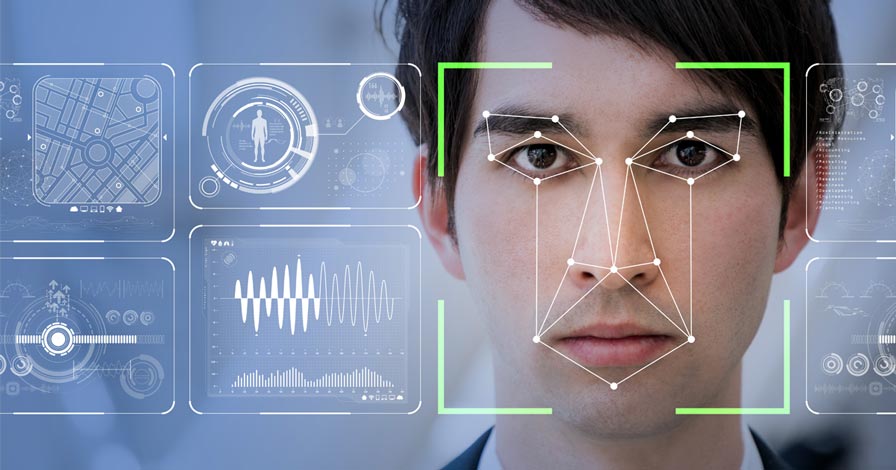What is liveness detection and how does it work?
September 14, 2023 | 5 minute read

Securing online identities and sensitive information has become more crucial than ever. Biometrics, aka using unique physical or behavioral characteristics for authentication, has played a pivotal role in enhancing security measures. Among the various biometric techniques, “liveness detection” stands out as a critical aspect, ensuring that the biometric data being captured is not a mere replica but a live and genuine sample. In this article, we’ll dive into what you need to know about liveness detection and how it works to help safeguard digital identities.
What is Liveness Detection?
Liveness detection is any technique used to detect a spoof attempt by determining whether the source of a biometric sample is a live human being or a fake representation. This is done using algorithms that analyze data collected from biometric sensors to determine whether the source is live or reproduced.
There are two main categories of liveness detection:
Active: Active liveness solutions primarily look for signs of life. They prompt the user to perform an action that cannot be easily replicated with a spoof. They might also incorporate multiple modalities, such as keystroke analysis or speaker recognition. The latter may analyze movement of a mouth to determine liveness. Because a user must show signs of life, these methods often suffer from usability issues, are lower in accuracy, and require user interaction.
Passive: Passive liveness algorithms primarily look for signs of a spoof, but can also passively look for signs of life. In either case, they do not rely on any active participation from a user. They can be more powerful because they can employ multiple algorithms in a way that is unobtrusive for users, yielding highly usable systems that can also adapt over time to client environments.
Why is Liveness Detection Important?
Liveness detection is crucial for a few key reasons:
1) Fraud Prevention:
Without liveness detection, an attacker could easily deceive a biometric system by using a high-quality photograph or video of the authorized user’s face, fingerprint, or other biometric traits. Liveness detection helps prevent such fraudulent attempts.
2) Enhanced Security:
By adding an extra layer of security, liveness detection strengthens the overall security posture of biometric systems, making them more reliable for applications such as mobile banking, access control, and secure authentication.
3) Privacy Protection:
Liveness detection ensures that only the genuine biometric data necessary for identification is captured, reducing the risk of privacy violations through the use of unauthorized materials or images.
How Does Liveness Detection Work?
Liveness detection employs various techniques and technologies to determine whether the biometric data being presented is from a live human or a fraudulent source.
Here are some common methods used in liveness detection:
1) Motion Analysis:
This method relies on tracking and analyzing the movement of the subject. For example, when using facial recognition, the system may instruct the user to blink, smile, or nod their head. Genuine users will respond with natural, involuntary movements that can be detected, whereas static images or videos cannot replicate these movements.
2) 3D Depth Sensing:
There are only a few 3D depth-sensing-enabled mobile phones in the market today, all of which are fairly low resolution. However, that will likely change in the future. Most vendors that claim 3D sensing in mobile solutions are in actuality using perspective distortion or other proxies to infer 3D structure. The algorithms have no real understanding of 3D structure and require user interaction. Nevertheless, advancing 3D hardware will enable more sophisticated liveness and matching applications as the technology evolves.
3) Texture Analysis:
Texture analysis involves examining the fine details and textures of the subject’s skin or fingerprint. Genuine skin will exhibit unique features and perspiration patterns that are difficult to replicate with a photo or synthetic material.
4) Challenge-Response Tests:
Liveness detection may also involve challenge-response tests, where the system asks the user to perform specific actions, such as turning their head or speaking a random phrase. The system then analyzes the responses to determine liveness.
5) Machine Learning AI:
Powerful machine learning approaches using advanced AI techniques have enabled sophisticated algorithms that are capable of detecting subtle image transformations that result in presentation attacks. This includes inferring 3D structure and detecting subtle textural differences in spoofs that are invisible to the human eye.
Solutions with Liveness Detection
Does liveness detection sound like something your business could benefit from? Here are a few solutions to consider…
Knomi, Aware’s mobile biometric authentication framework which provides secure and convenient facial and speaker recognition for mobile, multifactor authentication, includes advanced presentation attack detection algorithms. These detect not only victim impersonation, but also identity concealment. Features include:
- Passive approach to minimize user friction and maximize usability
- Advanced machine learning AI algorithms for unmatched liveness accuracy
- Solutions for onboarding, authentication, and document verification
- Browser-based options for rapid onboarding
AwareID also offers liveness detection in a lightning-fast identity verification, multi-factor authentication and biometrics in a single, low-code platform. AwareID’s cloud-based platform provides a functional offering from the start, combining automation with trust so you can continuously authenticate while increasing efficiency and lowering costs.